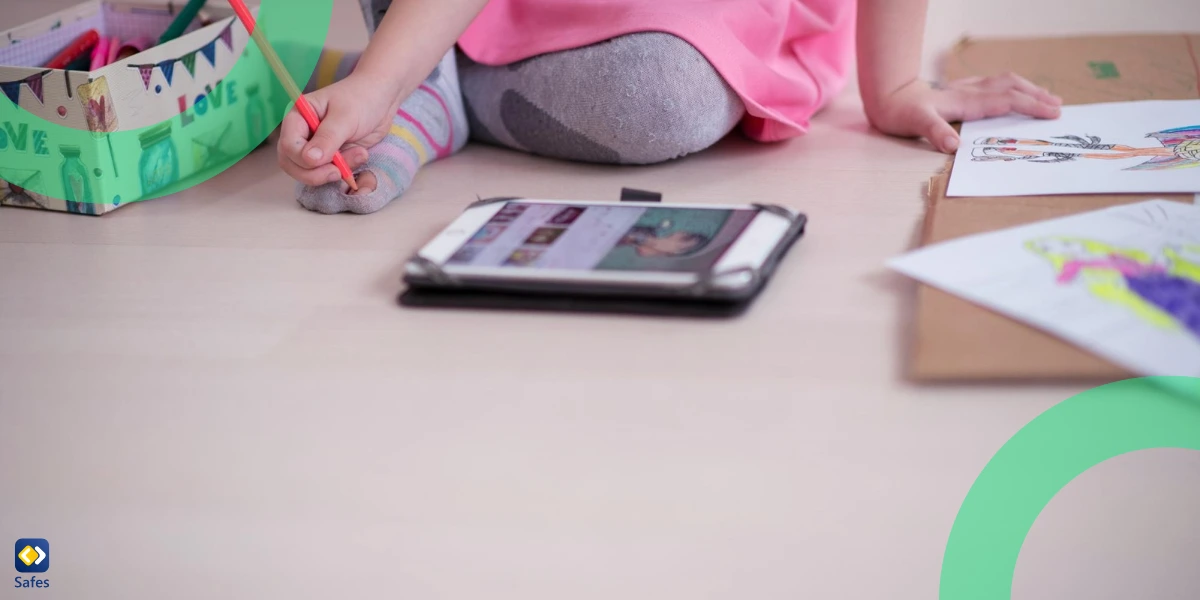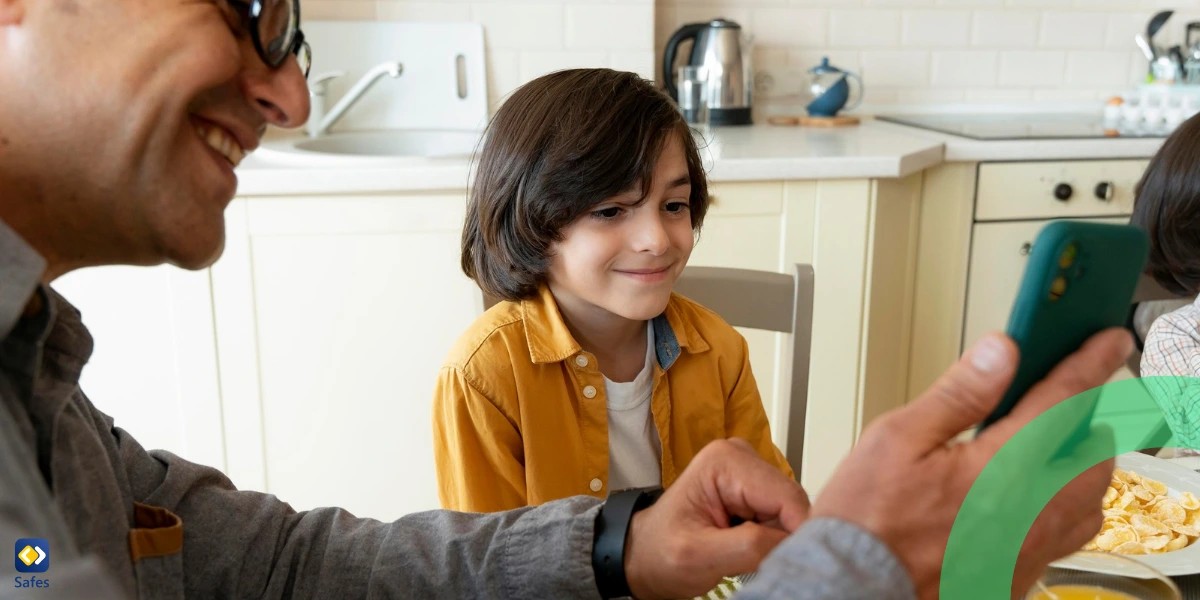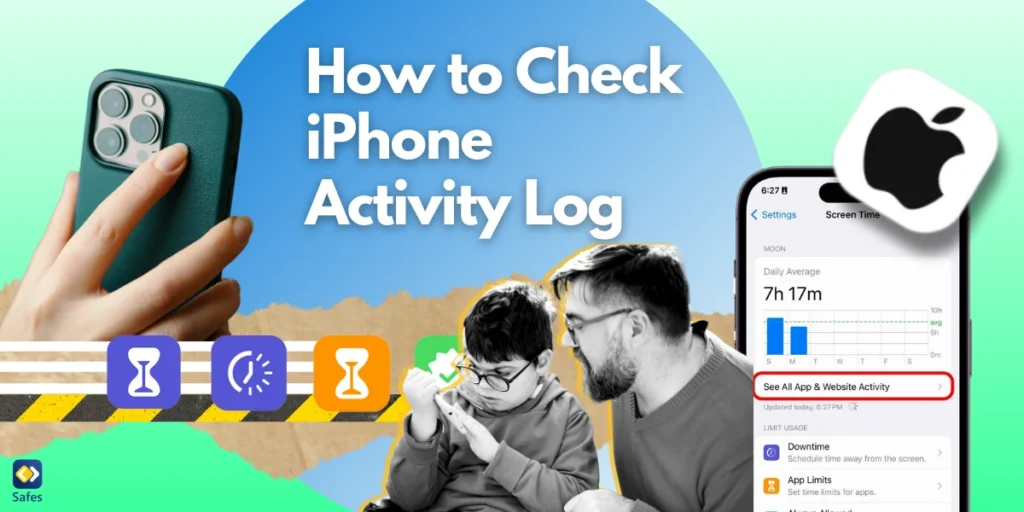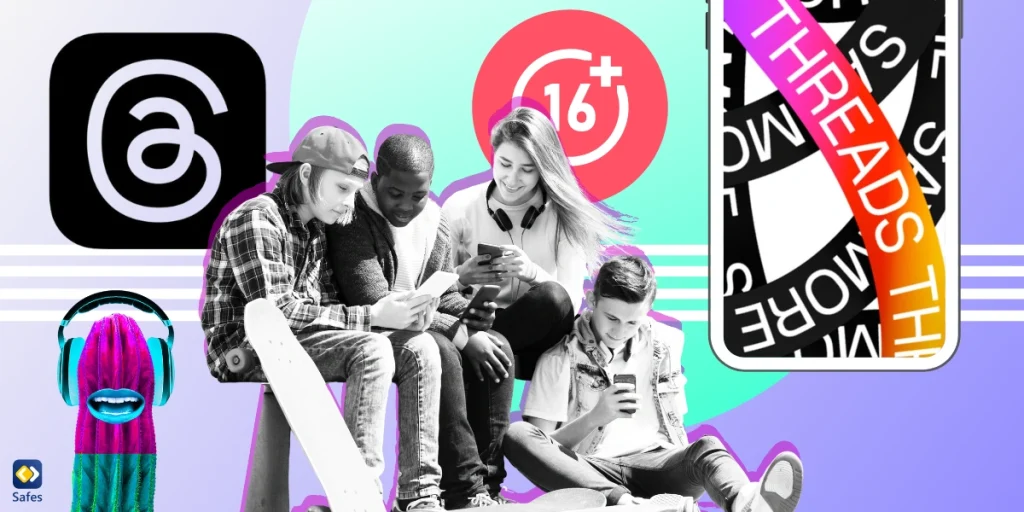It’s no secret that smartphones have become extensions of our hands—especially for teens. With iPhones dominating their pockets, these devices are gateways to worlds parents often feel excluded from. But here’s a surprising ally: the iPhone activity log. It offers insights into what your child is doing, how much time they’re spending on apps, and even when they might need a nudge toward healthier habits.
Download and Start Your Free Trial of the Safes Parental Control App
This postisn’t about snooping; it’s about empowering you with tools to ensure your teen’s safety in today’s digital jungle. Knowing how to check the iPhone activity log isn’t about prying into every detail. It’s about building conversations, teaching digital responsibility, and, yes, occasionally catching the sneaky 2 a.m. TikTok binge.
So, what will you learn here? A step-by-step guide to mastering iPhone activity logs, why this matters for your family’s well-being, and some tips to strike the perfect balance between trust and oversight.
What Are iPhone Activity Logs?
Imagine your iPhone as a diary—not of thoughts, but of actions. The iPhone activity log keeps a record of app usage, notifications, and screen time. This data is accessible to every iPhone owner, though most people overlook its potential. Think of it as the trail of breadcrumbs your phone leaves behind. With these logs, parents can gain a clearer picture of their teen’s digital world, identifying trends and usage patterns.
Apple doesn’t just hand you a phone; it gives you tools. Native iOS features like Screen Time, battery usage stats, and notification logs act as mini-detectives. For parents, these built-in tools provide ample data to track recent activity on the iPhone. These tools are simple to access, and if further detail is needed, reliable third-party apps are available for even deeper insights into device usage and behavior.
Some people believe that Apple hides this data or doesn’t track app usage. False. While it doesn’t record every click, enough is logged to give you a snapshot of habits. Your iPhone is already doing the hard work—it’s time for you to use the data. Recognizing these myths and knowing how to tap into these features empowers parents to make informed decisions without intruding too much on privacy.

Why Monitor iPhone Activity?
A connected world offers incredible opportunities for learning and growth, but it also comes with risks. Parents often find themselves trying to balance trust and oversight, ensuring their children are safe while respecting their privacy. This section delves into why monitoring iPhone activity isn’t about spying—it’s about protecting and guiding in an increasingly digital age.
Safety and Well-Being
Cyberbullying, harmful content, and screen addiction—these challenges are increasingly common in today’s digital world. According to the Pew Research Center, two-thirds of parents in the United States believe that parenting today is more challenging than it was two decades ago. Many attribute this increased difficulty to the influence of technology, including social media and smartphones.
Monitoring the recent activity on the iPhone allows parents to identify potential red flags before they escalate. This is not about spying but safeguarding. When a child spends excessive time on messaging apps or questionable websites, these logs can guide you in teaching healthier online habits.
Taking proactive steps ensures your child’s safety while maintaining open communication about digital risks. By addressing concerns early, you can help your child navigate the online world with more confidence and awareness. Engaging in these discussions builds trust and shows that your primary goal is their well-being, not control.
Educational Performance
Too much Candy Crush, too little calculus. Research shows that excessive phone use often results in poor academic performance. Teens who are glued to their screens tend to lose focus on assignments and deadlines. By monitoring their habits through iPhone logs, parents can identify patterns that may interfere with learning and encourage healthier, more focused behavior.
Regular check-ins provide the insight needed to establish reasonable boundaries, ensuring phone time doesn’t disrupt educational priorities. Discussing these findings with teens helps them understand the value of balance between academics and leisure. With a collaborative approach, parents can foster both independence and responsibility in their children.
Trust vs. Verification
Giving teens space is important, but keeping an eye on their safety is equally crucial. Monitoring an iPhone is like holding a flashlight on a dark path: you’re guiding them without overwhelming them. Open discussions about tracking their activity foster mutual understanding and build trust while addressing safety concerns in a balanced way.
These conversations can help strengthen family relationships and highlight shared goals of safety and responsibility. By communicating openly, parents and teens can create a collaborative approach to navigating the digital world. This ensures that monitoring doesn’t feel invasive but serves as a supportive measure.
Step-by-Step: How to Check iPhone Activity Logs
Learning how to check an iPhone app activity can feel overwhelming at first, but with the right tools and a clear guide, it becomes manageable. This section walks you through practical steps to uncover helpful insights while encouraging open conversations with your teen.
1. Screen Time is Your Friend
Start by going to Settings > Screen Time. Here, you’ll see daily and weekly reports on app usage and categories like entertainment or social media. Pay attention to the most-used apps; it’s an easy way to assess priorities. Use this tool to discuss with your teen how their time could be better balanced between productive and recreational use.
2. Battery Usage, the Unsung Hero
Head to Settings > Battery to find details on app activity. This feature highlights which apps drain the most juice over 24 hours or 10 days. Frequent app drains could signal overuse. Parents can use this feature to identify patterns and start conversations about screen time and device habits.
3. Notifications Tell a Story
Settings > Notifications isn’t just for tweaking alerts—it’s a goldmine for tracking behavior. Apps bombarding with notifications might be where your teen spends too much time. Frequent alerts can indicate which platforms are vying for their attention, providing a starting point for healthy discussions about managing distractions.
4. Spot Suspicious Apps
In the App Store, tap your profile and review Purchase History. Unknown downloads can be a red flag. Teach your child about the dangers of shady apps and how disabling in-app purchases protects them. Reviewing downloads together can also foster shared trust and openness in managing device security.
5. Family Sharing for Extra Oversight
Set up Family Sharing to monitor purchases, app downloads, and screen time across devices. It’s seamless, secure, and reinforces family accountability. This tool also encourages collaborative efforts between parents and teens in managing device use responsibly.
Beyond Basics: Tools for Digital Parenting
Digital parenting goes beyond basic checks; it’s about building trust, setting limits, and fostering responsibility. This section highlights tools and strategies to ensure your child navigates the online world safely and smartly.
The Digital Toolbox
Reputable third-party apps offer tools that go beyond Apple’s built-in features, providing detailed insights into device usage. These apps are particularly valuable for tracking recently used apps on iPhone data, helping parents stay informed without excessive monitoring. However, it’s important to choose apps with strong security reviews to ensure your family’s data remains protected.
While these apps can provide deeper insights into habits and behavior, parents should approach their use thoughtfully. Evaluating them for safety and ethical implications is key. Balancing these tools with open communication ensures monitoring supports your child’s well-being without compromising their sense of autonomy.
Limits and Downtime
Using Screen Time, parents can configure app limits and Downtime schedules. This feature is a powerful way to promote healthier habits. Restricting apps during study hours ensures teens stay focused on their academic responsibilities.
At night, Downtime can reduce distractions, ensuring teens get proper rest. These simple adjustments encourage a balance between education, relaxation, and device-free time.
Routine Checks, Not Surveillance
Make checking activity logs a part of family tech conversations. These regular, non-intrusive reviews provide an opportunity to teach responsibility while maintaining trust. By framing it as a collaborative effort, parents can encourage positive discussions about digital habits.
Parents can also use these moments to strengthen relationships and address safety topics in a supportive manner. This shared understanding of digital safety promotes healthier device usage while fostering an open, communicative family environment.

Safes: Your Partner in Digital Parenting
Parenting in the digital age can feel overwhelming, but the right tools make a difference. Safes provides a seamless parental control app designed to help you track activity, manage devices, and keep your kids safe online. With its intuitive features, staying informed about your child’s digital habits has never been easier.
Compatible with both iOS and Android, Safes offers comprehensive support for modern families. From monitoring screen time to setting limits, this app empowers you to guide your child toward healthier online habits. Try our free trial today and experience the first step toward smarter, worry-free parenting.
Privacy and Ethics: The Balancing Act
Every child deserves privacy, but parents also carry the responsibility to protect them from potential dangers. Open discussions about the “why” behind monitoring encourage kids to see it as guidance rather than punishment. When parents approach this topic with transparency, they foster trust while maintaining safety as the family’s top priority.
Always ensure your monitoring practices align with local laws to avoid any legal or ethical missteps. Transparency is key; sneaky snooping often backfires by eroding trust. By understanding your rights and acting lawfully, parents can maintain a fair approach that prioritizes their children’s safety and well-being.
Monitoring should feel supportive, not controlling. Reassure kids that the goal is their growth and safety. This mindset strengthens family bonds and teaches children how to make safer online choices. Through collaboration and mutual respect, parents can empower their children while protecting them in the digital age.
Wrapping It Up: Keep Phones Safe and Habits Healthy
Mastering iPhone logs might seem like a small step, but its impact on your family’s digital health is profound. From iPhone location history to app tracking, these tools offer parents valuable insights. They guide teens toward better online habits and empower families to foster a safer, more balanced digital environment together.
By incorporating these practices, parents can strengthen their role as digital mentors, providing support without being overbearing. This collaborative approach helps ensure that kids grow into responsible, tech-savvy individuals. It’s not about control; it’s about empowering them to make smarter choices in an increasingly connected world.
Start by following the steps here and integrating them into daily routines. Encourage open conversations about device use to build trust and mutual understanding.
Your Child’s Online Safety Starts Here
Every parent today needs a solution to manage screen time and keep their child safe online.
Without the right tools, digital risks and excessive screen time can impact children's well-being. Safes helps parents set healthy boundaries, monitor activity, and protect kids from online dangers—all with an easy-to-use app.
Take control of your child’s digital world. Learn more about Safes or download the app to start your free trial today!




